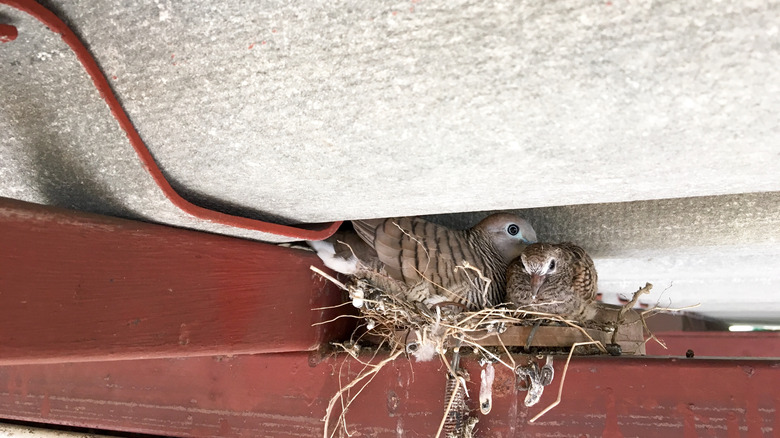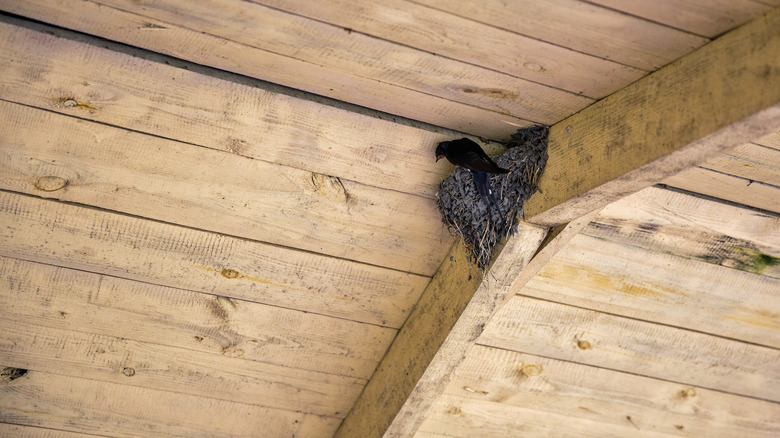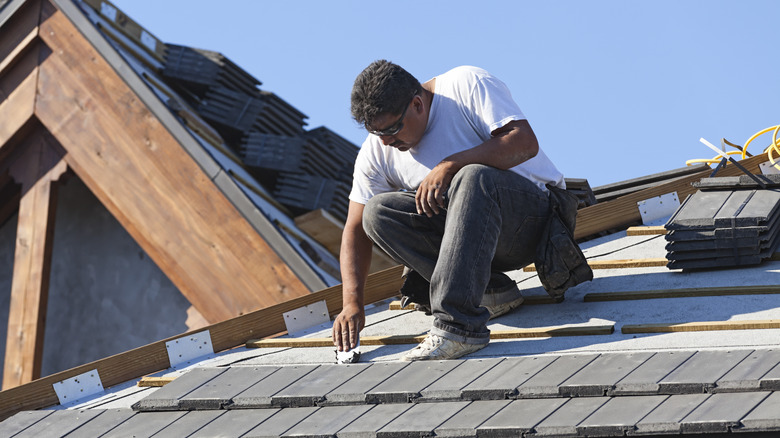How To Safely Remove Birds From Your Attic, According To Experts
We may receive a commission on purchases made from links.
Birds in your backyard are charming, but birds in your attic are a nightmare. Just because you want to attract these feathered friends to your yard doesn't mean you also want them setting up shop inside your home. In fact, allowing them to do so can cause pretty substantial damage and health risks. As they build their nests, they can remove insulation, peck away at the wood, and even damage electrical components to make space for their new home. In addition, they'll leave behind droppings that can expose you to diseases like cryptococcosis, which can lead to headaches, rashes, and coughs. Because of this, it's very important to get birds out of your attic as quickly as possible, but it can be difficult to know how. To find out, we asked a bird professional to weigh in.
The best course of action is to reach out to a wildlife professional so you don't wind up hurting the animal. "Those with bird invaders should contact a wildlife rehabilitation center, state biologist, or official, or contact a local bird group to find a qualified professional," Zach Hutchinson, ornithologist and head flocker at Flocking Around, told House Digest in an exclusive talk. "Handling birds by non-professionals can not only be unsafe for people but the safety of smaller birds must be considered. Birds can be quite fragile if handled improperly." However, there are some other ways to get them out of your home without touching them.
Use light and noise
If birds are nesting around your house, they're doing so because they feel it's the safest place to lay their eggs. If you ruin that sense of safety, they might leave to find a new nesting spot. You can do this by introducing light and noise into the dim and quiet attic space. "Residents can try to deter or haze unwanted birds in an attic with noise and light," Zach Hutchinson exclusively told House Digest. Before jumping into this solution, though, first double-check if you're legally allowed to handle the birds. "Depending upon where someone is located, local, state, and federal laws may prohibit the handling and disturbing of a wild bird without proper permitting," he warned.
If it's legal, you can invest in sound and light machines to make the attic appear less sheltered. These machines typically use predator sounds along with distressed bird chirps to make the nesting animals think the area isn't safe. An example of this is the Bird Chase Super Sonic, which retails for $177 on Bird B Gone. Similarly, a light machine uses strobe lights to make the space difficult to sleep in. An example of this is the GLOWMAX Strobe, which retails for $90 on Amazon. However, this will only work on birds that just began to nest. If they've been there for some time, you'll need to call a professional to remove them.
Plug any holes or gaps
Birds need to leave the nest once in a while to go find food, and once they do, you can take that window of opportunity to plug any holes or gaps they're using to gain access to your home. This will prevent the unwanted birds from coming back in. "If a bird has found its way into an attic, readers can wait for the bird to leave the space, then seal any entrances or exits to prevent the bird from entering again," Zach Hutchinson told House Digest in our exclusive interview. "Prevention and deterrents are the best course of action when dealing with wild birds." Scope out the area beforehand so you can board up the entrances as quickly as possible when the animals leave.
They typically gain access by entering through a roof or siding opening. To find the culprit, head into the attic while it's dark and see if there are any gaps where you can see light streaming in. If there are, wait until the bird leaves and patch them up. You can set up a wireless, motion-sensored camera in your attic to alert you when they leave. If you can't seem to catch when they exit, patch up the holes ahead of time and install a bird valve, which has a hole big enough for them to leave the attic, but not re-enter it. One option is the Bird Valve, which retails for $34.95 from Viking Product Supply (or just $5 if you already own the Bat Valve Model TBV-FLEX2).



